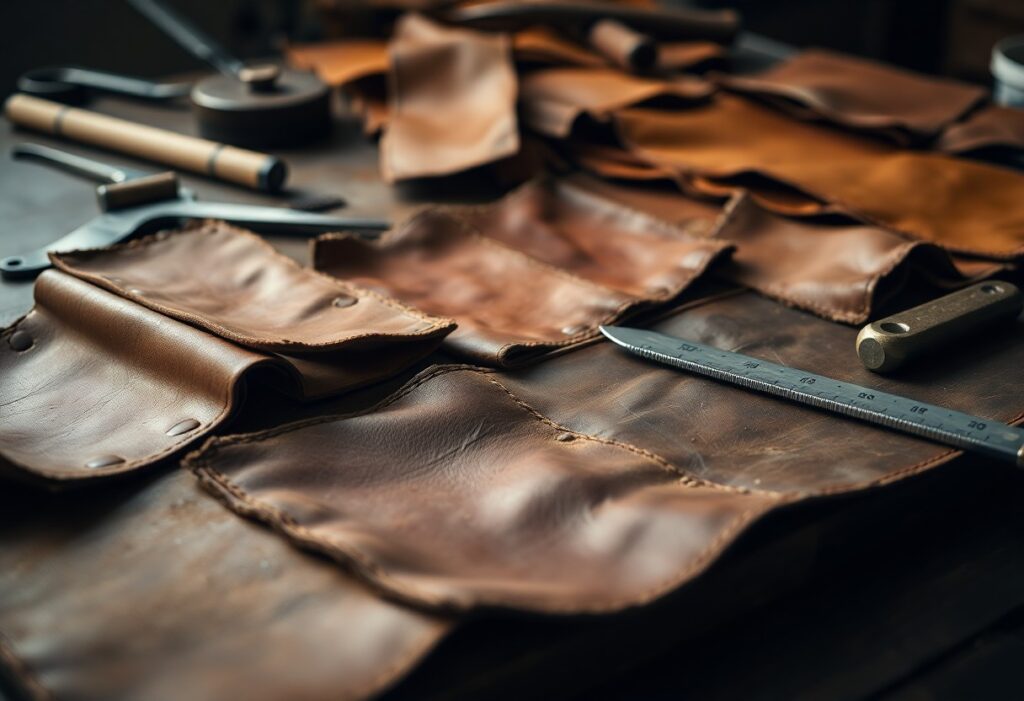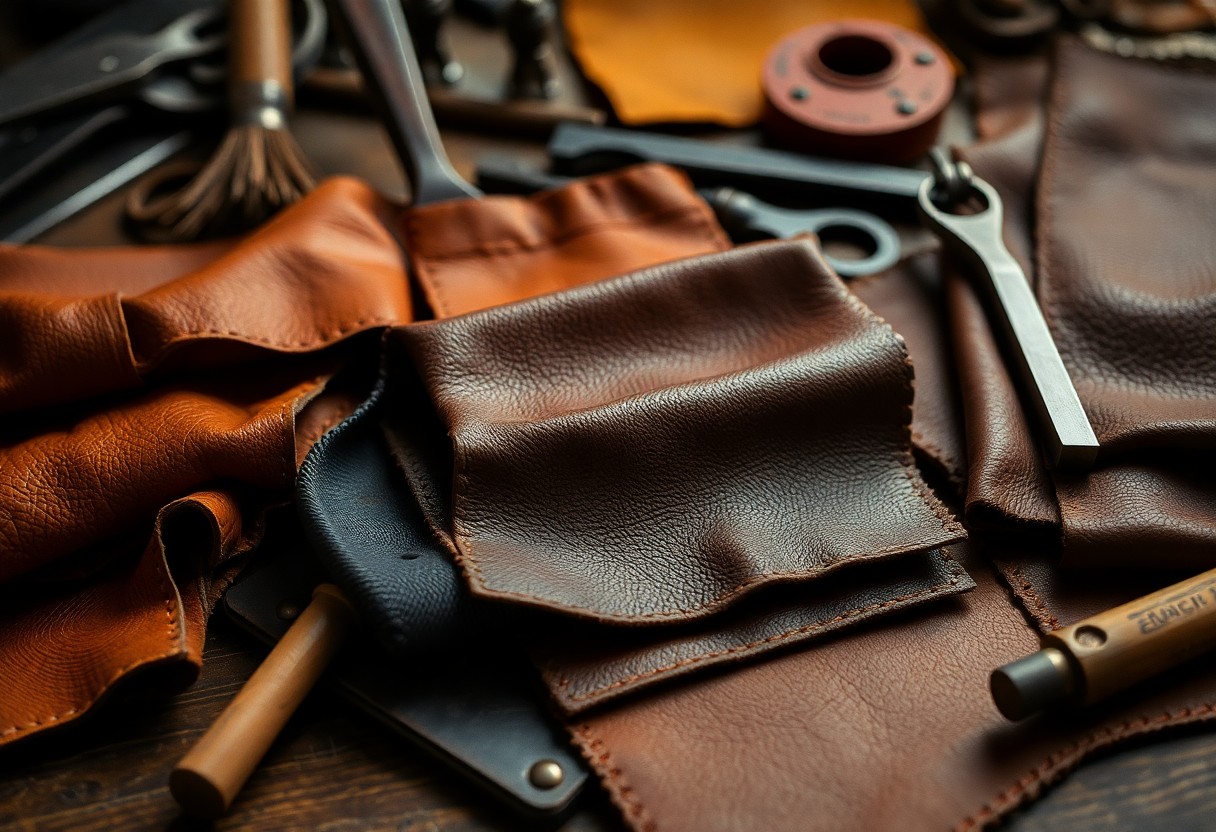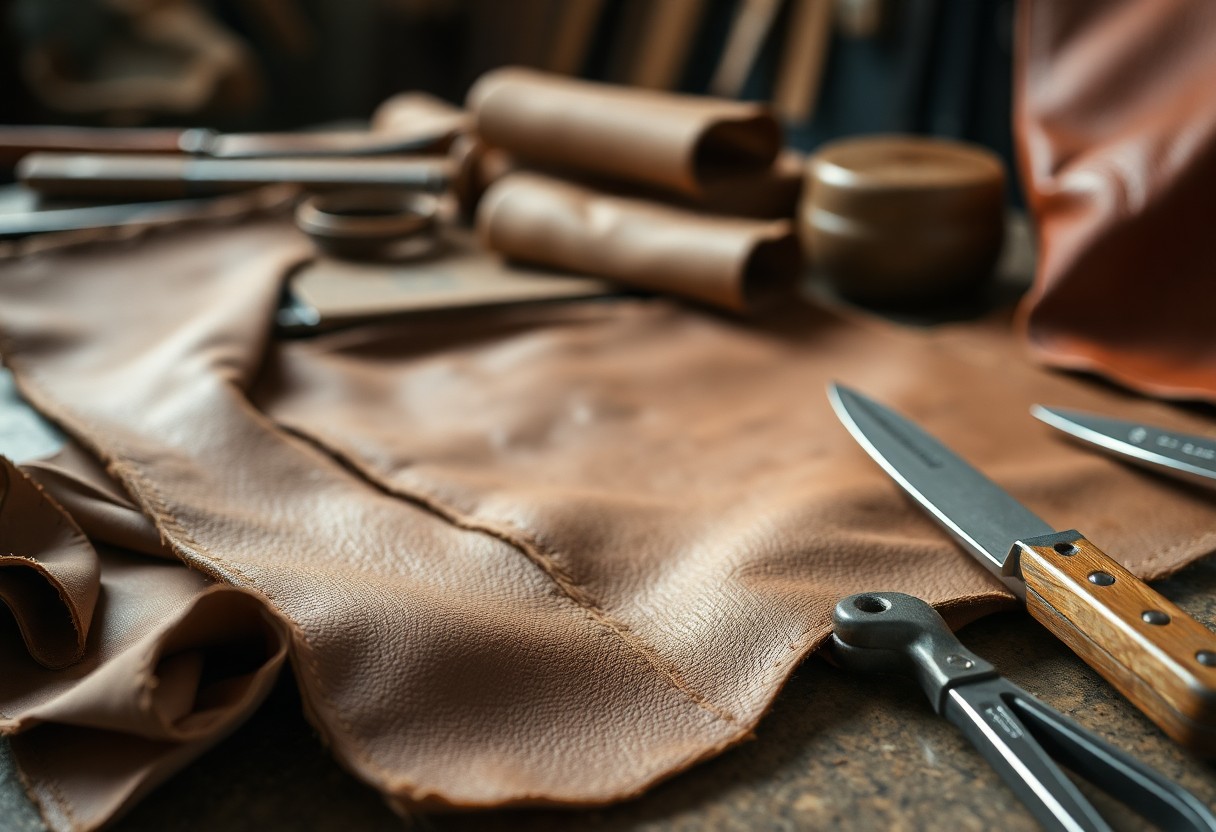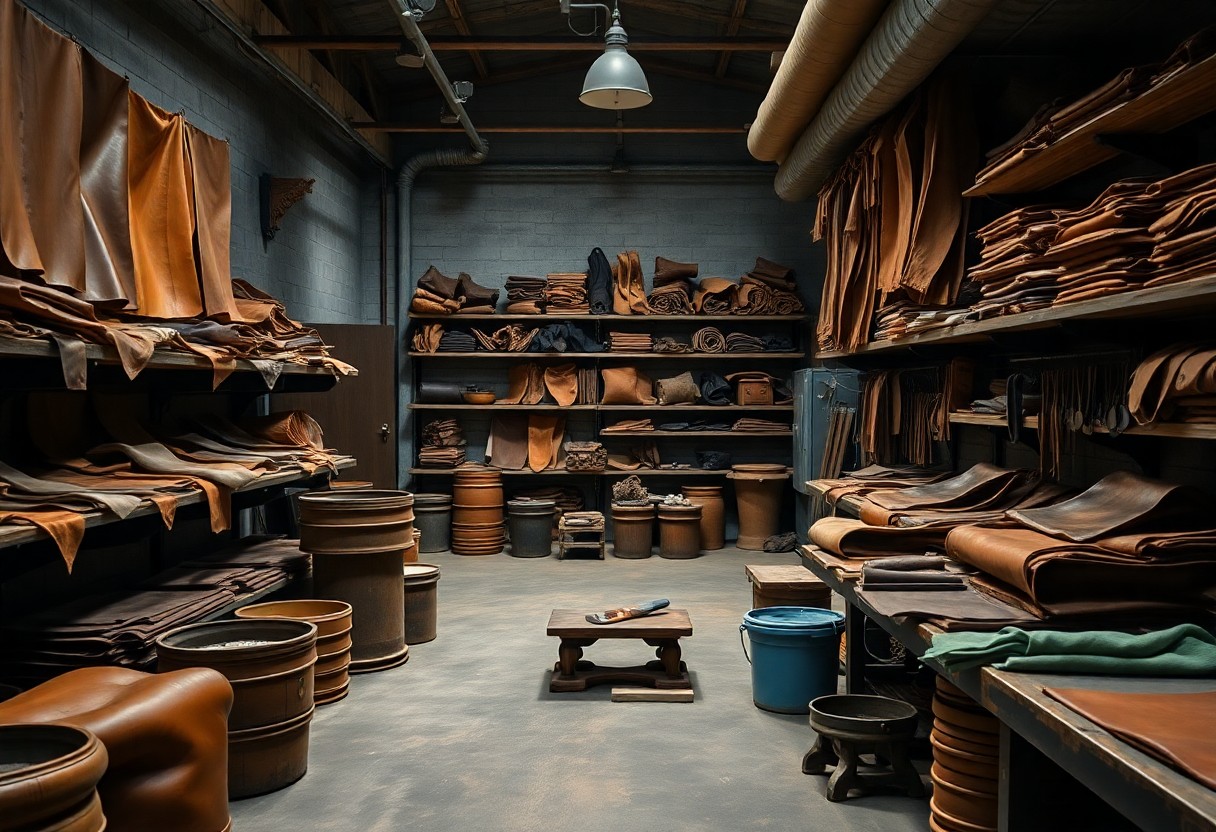
The transformation of leather tanning over the years has resulted in a sophisticated process that greatly influences the quality of leather products. Different tanning methods impart distinct characteristics to leather, affecting essential attributes such as durability, water resistance, texture, and color retention. The journey begins with raw hides, progressing through critical stages including chrome tanning, vegetable tanning, and chrome-free methods. Each method uniquely alters the leather's qualities, impacting its usability and maintenance. By comprehensively understanding these processes, you can make informed decisions regarding leather quality while also considering the environmental implications, as certain methods are significantly more sustainable than others.
Discover the Distinct Types of Leather Tanning Methods
In the realm of leather production, various tanning methods are employed to convert raw hides into usable leather. The main techniques include chrome tanning, vegetable tanning, and chrome-free tanning. This exhaustive guide aims to equip you with insights into the nuances of each method, empowering you to select the technique that aligns perfectly with your leather requirements.
| Method | Characteristics |
| Chrome Tanning | Fast, water-resistant, 85% of global production |
| Vegetable Tanning | Natural, eco-friendly, 10% of production |
| Chrome-free Tanning | Environmental-friendly, 5% of production |
| Combination Tanning | Blends multiple methods for unique properties |
| Aldehyde Tanning | Specialized process for specific applications |
Unraveling the Chrome Tanning Process for Quality Leather
The chrome tanning technique utilizes chromium (III) salts to create leather that is not only soft and flexible but also highly sought after for various applications. This method produces leather that exhibits remarkable water resistance and readily absorbs dyes, making it a favorite in the industry. The efficiency of chrome tanning is notable, typically requiring just 24-48 hours for completion, which is crucial for meeting the demands of mass production.
Exploring the Timeless Craft of Vegetable Tanning
As one of the oldest and most traditional methods, vegetable tanning employs natural tannins derived from tree bark and leaves. This technique is highly regarded for its ability to produce leather that develops a beautiful patina over time, all while being biodegradable. Different types of vegetable tanning, utilizing materials like oak bark, chestnut, and mimosa extracts, contribute to the distinctive characteristics of the final product. Expect this meticulous process to take around 4-6 weeks, resulting in leather that is generally firmer and more structured compared to its chrome-tanned counterparts.

Step-by-Step Guide to the Leather Tanning Process
The journey from raw hides to high-quality finished leather involves a systematic and detailed process. Here’s a thorough examination of each crucial step and its role in achieving the desired leather quality.
Key Pre-tanning Operations for Superior Quality
To guarantee optimal leather quality, raw hides undergo a series of careful preparation steps. This initial stage involves soaking the hides in clean water for 24-48 hours to remove salt and dirt, followed by a liming process designed to eliminate hair and fats. Maintaining precise pH control during this phase is vital to prevent any damage to the hides, ensuring they are primed for the tanning process ahead.
Critical Procedures in the Main Tanning Process
The pretanning phase begins with deliming and pickling to prepare the hides for the primary tanning agents. The most common method is chrome tanning, which employs chromium sulfate and can transform hides into leather in as little as 24 hours. In contrast, vegetable tanning relies on natural tannins and extends the process to approximately 20-60 days.
Temperature control is another essential aspect of the tanning process. Chrome tanning typically occurs at temperatures between 35-40°C, while vegetable tanning is carried out at cooler temperatures ranging from 20-25°C. Constant monitoring of pH levels is crucial to avoid damaging the leather and ensuring optimal absorption of tanning agents throughout the process.
Advanced Leather Treatment Techniques for Enhanced Quality
A variety of techniques are available to improve the properties of your leather. From surface finishing to deep penetration treatments, each method serves a specialized purpose. With the appropriate treatment, you can extend your leather’s lifespan by up to 50% while significantly enhancing its resistance to water, heat, and wear.
Examining Diverse Surface Treatments for Leather
Surface treatments applied to leather may include waxing, buffing, and protective coatings. These techniques can enhance water resistance by as much as 70%, allowing you to choose between a shiny or matte finish according to your aesthetic preference. Furthermore, surface treatments play a crucial role in shielding leather against UV damage and everyday wear and tear, ensuring the material remains in excellent condition for years.
Impact of Dyeing Processes on Color and Longevity
Your leather can absorb various types of dyes at different depths. Aniline dyeing, for instance, penetrates deeply into the leather, while surface dyeing provides a more controlled color application. The dyeing process you select will significantly influence both the visual appeal and durability of the leather.
Moreover, the dyeing method you choose has a profound effect on the final characteristics of the leather. Drum dyeing can achieve up to 95% color penetration, while spray dyeing allows for enhanced precision in color control. It's worth noting that natural dyes are more environmentally friendly but may fade roughly 20% faster than their synthetic counterparts.

Identifying Key Quality Factors in Leather Processing
The quality of leather is shaped by numerous interconnected factors throughout the processing chain. Gaining insight into these elements is crucial for achieving outstanding results in both leather selection and care. The tanning method, hide quality, and processing parameters are all pivotal in defining the final characteristics of the leather. By mastering these factors, you will be well-equipped to assess leather quality according to your specific requirements.
Choosing Raw Materials for Optimal Results
When selecting raw materials, it’s imperative to prioritize the condition of the hides and the animal source. The quality of your raw materials directly influences the properties of the finished leather. The most desirable hides come from healthy animals and are characterized by minimal surface imperfections. Look for consistent thickness and the absence of parasitic damage. It is essential to select materials based on their intended end-use, as different applications demand specific hide characteristics.
Significance of Processing Parameters in Quality Control
A direct correlation exists between processing controls and the overall quality of leather. Maintaining strict control over pH levels, temperature, and chemical concentrations is critical for success. The tanning duration typically ranges from 24 to 48 hours, with temperature controls kept between 35-40°C. Your careful attention to these parameters guarantees consistent leather quality throughout the entire process.
This rigorous control should extend to every stage of processing. You must monitor moisture content (ideally 45-55%), maintain appropriate drum speed during tanning, and ensure accurate chemical dosing. Furthermore, the drying conditions must be carefully regulated to avoid any damage to the leather. A comprehensive focus on these parameters culminates in high-quality finished leather that meets the highest standards.
Proven Strategies for Achieving Exceptional Leather Treatment Outcomes
Not all leather treatment processes yield the same quality. It is vital to concentrate on temperature control, chemical balance, and timing precision throughout the tanning process.
- Regularly monitor pH levels
- Maintain consistent temperature
- Adhere to precise chemical ratios
- Document each step meticulously
Being attentive to the signs of effective tanning can empower you to achieve high-quality finished leather that meets your expectations.
Techniques for Optimizing the Tanning Process
To achieve optimal results, it is crucial to control your tanning environment. Keep your workspace at temperatures ranging from 20-25°C and maintain humidity levels between 45-55%. Ensure that your chemical solutions are fresh and accurately measured. Regular maintenance of equipment is essential for achieving consistent results in your leather treatment.
Upholding Quality Standards in Leather Care
The quality of leather is significantly influenced by your storage conditions and handling procedures. Store your leather in a dry, cool area away from direct sunlight to maintain its integrity. Regularly check the moisture content and rotate your stock every 30 days to ensure freshness.
Monitoring the process is vital for maintaining quality standards. Your routine checks should include pH testing, physical inspections, and moisture content analysis. Document all findings and adjust your procedures based on the results. Consistent quality control enables you to detect potential issues before they adversely affect your final product.

Thorough Evaluation of the Advantages and Disadvantages of Tanning Methods
To foster a deeper understanding of leather tanning, it is essential to assess the various methods based on their benefits and drawbacks. Below is a detailed comparison of the primary tanning techniques:
| Pros | Cons |
|---|---|
| Chrome tanning: Quick processing, cost-effective | Chrome tanning: Environmental concerns, potential disposal issues |
| Vegetable tanning: Eco-friendly, natural process | Vegetable tanning: Time-intensive, requires higher water usage |
| Chrome-free tanning: Environmentally safe, high quality | Chrome-free tanning: Complex process, increased costs |
| Combination tanning: Diverse properties | Combination tanning: Difficult quality control |
Economic Impact of Leather Tanning Decisions
Choosing a specific leather tanning method can significantly influence your production costs. Chrome tanning boasts 85% cost efficiency compared to vegetable tanning, while chrome-free methods often increase expenses by 20-30%.
Effects of Tanning Decisions on Leather Quality
The quality of even the finest leather can be drastically compromised by poor tanning choices. The method selected directly impacts essential attributes such as durability, water resistance, and texture.
For instance, leather treated through chrome tanning demonstrates superior water resistance and flexibility, whereas leather tanned with vegetable methods tends to exhibit better aging characteristics and develops a unique patina as it matures.
Insights on Leather Tanning and Treatment Practices
From the information presented, it becomes apparent that various leather tanning and treatment methods significantly influence the quality and attributes of leather. The decision between chrome, chrome-free, or vegetable tanning will greatly affect the leather’s durability, texture, and environmental implications. Additionally, the dyeing technique you choose—whether aniline or crust—will impact the color depth and aging process of your leather. Lastly, the type of finishing applied—be it full grain, corrected grain, or top-coated—determines the leather's appearance, breathability, and maintenance needs. Gaining a nuanced understanding of these processes will empower you to make well-informed choices regarding your leather purchases and care practices.
Your Inquiries Addressed: Leather Tanning FAQs
Q: What are the significant differences between chrome tanning and vegetable tanning?
A: Chrome tanning utilizes chromium salts, resulting in soft, water-resistant leather that is processed swiftly and economically, accounting for 85% of global leather production. In contrast, vegetable tanning employs natural tannins derived from tree bark and leaves, requiring a longer processing time while producing leather that matures beautifully with age. Although vegetable-tanned leather is more environmentally friendly in terms of disposal, it is more susceptible to staining compared to chrome-tanned options.
Q: How does aniline dyeing affect leather quality and aesthetics?
A: Aniline dyeing consists of immersing leather in dye baths that deeply penetrate the material. This technique yields a uniform color throughout the leather, ensuring excellent color retention. Modern aniline-dyed leather is often dyed partially through rather than completely, resulting in a lighter middle layer. This method enhances the leather's stability while ensuring good color depth on the surface.
Q: What differentiates full grain leather from corrected grain leather?
A: Full grain leather retains its natural surface without sanding or artificial overlay, showcasing natural pores, the strongest fiber structure, and the ability to be restored when scuffed. In contrast, corrected grain leather undergoes sanding and is coated with a plastic layer. While corrected grain is easier to clean and maintain, it tends to have reduced breathability and may crack over time without any repair options.
The Article Guide to leather tanning and treatment methods processes types and their impact on quality appeared first on My Shoes Finder
The Article Leather Tanning: Methods, Processes, and Quality Impact Guide Was Found On https://limitsofstrategy.com


It’s fascinating how the methods of leather tanning not only influence the quality of the product but also tie into broader themes of sustainability and environmental impact. I’ve personally noticed how different leather types have varied sensibilities, especially when it comes to upkeep and longevity. For instance, vegetable-tanned leather ages beautifully, developing a patina over time, but it does require regular conditioning to maintain its luster.
You bring up such an insightful point about leather tanning and its intricate connection to sustainability. I’m always intrigued by how these age-old techniques can still resonate in our modern discussions about environmental impact. Your observation on vegetable-tanned leather is spot-on; it indeed develops that unique patina, telling a story over time. I’ve found that the aging process not only enhances the aesthetic but also gives the piece a sense of character and history.
It’s interesting how the article delves into finding quality footwear that balances affordability and craftsmanship, much like how different tanning methods impact leather’s character and durability.
‘Affordable Quality Shoes: Find the Best Value Today’
https://arquiaca.org/affordable-quality-shoes-find-the-best-value-today/.
It’s fascinating to see how the tanning process has evolved, and it’s so important to recognize the blend of tradition and innovation in leather production. I’ve often found myself drawn to the differences in texture and color that arise from various tanning methods. For example, the natural look and feel of vegetable-tanned leather appeal greatly to me, as it often ages beautifully and develops a unique patina over time.
I find the evolution of leather tanning to be a fascinating subject, especially considering how deeply intertwined it is with both culture and technology. The journey from raw hides to the final product is not just a technical process but a reflection of centuries of craftsmanship and innovation. It’s intriguing to think about how each method—whether it’s chrome tanning, vegetable tanning, or any of the chrome-free alternatives—carries its own historical significance and technique.